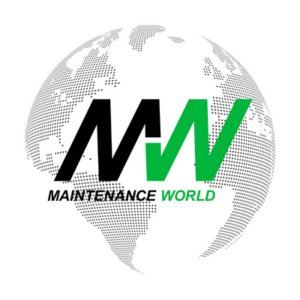Using a CMMS for Root Cause Analysis (RCA)
Paweł Bęś, Logistics and Maintenance Marketing Expert, QRmaint
Posted 9/10/2024
Root Cause Analysis (RCA) is one of the most common methodologies for internal teams to discover the root causes of issues within your facility. No matter if your background is in logistics, manufacturing, or any other industry, you most likely had to do past analyzing problems that affected your operations. These could be multiple problems, such as machinery malfunctions, wear and tear of equipment, broken slides and bearings, and many more. All those problems often lead to extended machinery downtime and losses in overall productivity.
This article briefly clarifies what Root Cause Analysis is, what elements it involves, and how to get better traceability over your equipment performance with a CMMS system. After reading, you should be able to better understand how to benefit from data collected based on the Computerized Maintenance Management System (CMMS) usage to improve your RCA process.

What is Root Cause Analysis (RCA)?
Root Cause Analysis (RCA) is a well-structured process for internal teams in manufacturing or other industries arranged to investigate events in your facility. Events measured and tracked by RCA procedures are dedicated to core business operations to identify process breakdowns. So, the main purpose of an RCA is to find out what happened. Next, it is to learn more about why it happened and determine what changes need to be made. It is mostly about corrective action. We’ll tell you more about it below.
7-Step Approach to RCA:
1) Determine the Event
At this point, the RCA process should identify the event to be investigated. Malfunctions and errors in manufacturing often have their dedicated codes. Therefore, at this point, it is about considering data from various sources such as incident reports, risk assessments, personnel who work closely with machinery (such as machinery operators) and other complaints. The RCA process should establish prioritization of events.
2) Team Set-up
Set up a team with members who know the relevant processes and systems. In most production facilities, the team will consist of technicians and engineers who are regularly responsible for repairs and maintenance. Team members should be selected for their ability to discuss and analyze what happened during an incident. In many situations, direct staff members personally involved in the incident are the best people to provide constructive feedback. There should also be a top person who takes the lead to guide the team through the process.
3) Event Description
At this point, gathering and organizing information about the event is very important. This step includes the incident report and any documentation. It may include everything that starts from the preliminary investigation and will lead to later discussion by the team about factors.
4) Contributing Factors (understanding the problem)
In the event description, identify the circumstances or conditions that increased the likelihood of the event occurring. You need, at that point, timeline analysis. It can include a timeline of events to identify key moments and potential factors. You should also interview each stakeholder. Gather information from individuals involved in the event to understand their perspectives and experiences. Start with data analysis through process mapping to identify potential bottlenecks or weaknesses. Perform data analysis-reviewing performance metrics, incident reports, or in some cases, getting customer feedback.
5) Root Cause Identification
Here, you closely analyze the contributing factors to pinpoint the underlying issues that caused the event. Keep asking “why?” to get deeper into the underlying causes of the event. There are a few tips on managing this better such as creating a cause-and-effect diagram to visualize potential contributing factors. You can identify potential failure modes with Failure Mode and Effects Analysis (FMEA). You can also use the CMMS, which we share more about below in this article.
6) Corrective Action
We’ve just reached the point where we can create specific actions to address the identified root causes. Here, you start developing and implementing changes to address the root causes and prevent similar events in the future. It’s time to think about corrective actions and ensure they are effectively executed. However, no rush is required. Test changes on a smaller scale before you begin full implementation to assess their effectiveness earlier.
7) Evaluation and Monitoring
It’s important to measure the success of changes. This is even more important when you don’t have any data about an event, so any corrective action may still require adjustment. I would say that to monitor and evaluate, you need to establish Key Performance Indicators (KPIs). These metrics will help define and track the effectiveness of the changes. Keep using the findings to identify further areas for improvement and refine the process.

How a CMMS Supports you during Root Cause Analysis (RCA)
The CMMS system is a tool for service and maintenance activities. The core operations on the equipment and machinery units handled by the CMMS allow you to draw on plenty of data for your Root Cause Analysis (RCA) process. Undoubtedly, it enhances the effectiveness of Root Cause Analysis (RCA) processes more than any other element, as the main idea here is about centralizing data to get a holistic overview of what is going on in your plant.
We can determine where the CMMS can be used in this process by referring to the 7 Steps of Root Cause Analysis (RCA). Unsurprisingly, if your CMMS covers a wide range of activities, you’ll most likely get data on everything happening. Moreover, you’ll get features that will help you improve the process internally.
1) Determine the Event with the Incident Tracking Feature
CMMS systems can capture and categorize incidents and save data when incident tracking. It provides a centralized repository for data, where you can easily get a historical overview of the events for your analysis. It can help identify recurring patterns or trends that might indicate underlying issues much deeper in the processes. Along with that feature comes the Risk Assessment Integration. Here, CMMS can be integrated with risk assessment tools, allowing for proactive identification of potential failure points. But don’t worry-you can just download data from CMMS and proceed externally without integration.
2) Team Set-Up with Team Management
Team management is one of the core role-based access features in the CMMS. What you can do in the CMMS system is work order management and task assignments. You can create tasks and provide granular control over who can access and modify data. A modern CMMS system is a great internal communication tool. You can report your issue using built-in communication features like chat, which can facilitate collaboration and knowledge sharing among team members.
3) Event Description with Fault Reporting
The CMMS feature for fault reporting allows you to register any issue with detailed descriptions, including media such as videos and photos. You can store all documentation in the CMMS with relevant incident reports, maintenance records, and inspection results. As we said before, you can check the dates of the accidents and create a timeline. Simply put, a CMMS can help create timelines by tracking the sequence of events and associated timestamps. This way, you know the exact time of the issue, how long the repair or maintenance takes, and when the last failure happened.
4) Contributing Factors with Equipment Performance Measures
A CMMS can analyze data on equipment performance. As we said above, you can get insights into the maintenance history and operating conditions to identify potential factors that cause errors. You can set up process mapping because CMMS can be used to create visual representations of processes, where you can get, with a few clicks, detailed information about certain machinery, parts, and equipment. You can see cycles and check if there wasn’t any failure with preventive maintenance.
5) Root Cause Identification with Dashboard TV
The CMMS can support Failure Mode and Effects Analysis (FMEA), where a digital maintenance system provides data on equipment components and failure modes. Moreover, you can use the CMMS to analyze cause-and-effect diagrams on the dashboard to visualize potential relationships between factors.
6) Corrective Action with Work Order Management
Undoubtedly, one of the main functions of a CMMS system is Work Order Management. A CMMS can generate work orders for corrective actions. It is how you ensure they are properly planned, scheduled, and executed within the required time frame. Of course, with CMMS, you can also get Inventory Management. CMMS can help manage the spare parts needed for corrective actions so you can also track their usage.
7) Evaluation and Monitoring with Reports
With a CMMS system, you can configure your reports as you want. This feature lets you track key performance indicators (KPIs) related to equipment reliability and maintenance effectiveness. You can strictly focus on certain operations to measure and analyze trends.
Final Takeaway – Using a CMMS for Root Cause Analysis
Although not frequently used for RCA in the past, today, the CMMS system is an asset that helps you run effective Root Cause Analysis (RCA). The perception of CMMS is shifting, and it is providing a centralized platform for data collection, analysis, and reporting. As you may have gathered reading this article, the CMMS enables organizations to efficiently identify the underlying causes of operations problems.
We can confidently say that targeted corrective actions can be taken with the CMMS system. It’s worth considering integrating one, which can significantly improve the overall efficiency and productivity of any organization.

Paweł Bęś
Paweł Bęś, Logistics and Maintenance Marketing Expert for QRmaint. He is a B2B marketer with 8 years of experience in the logistics industry in the Netherlands. His work included business analysis of distribution and supply chain operations of high-tech companies in EMEA and APAC. He was responsible for directing, coordinating, planning and supervising transportation tasks and internal operations. He is currently responsible for marketing activities at QRmaint, a company that provides CMMS systems for various industries.
Related Articles

Too Small for a CMMS? Think Again

The Role of Information Technology in Plant Reliability

The Future of CMMS





